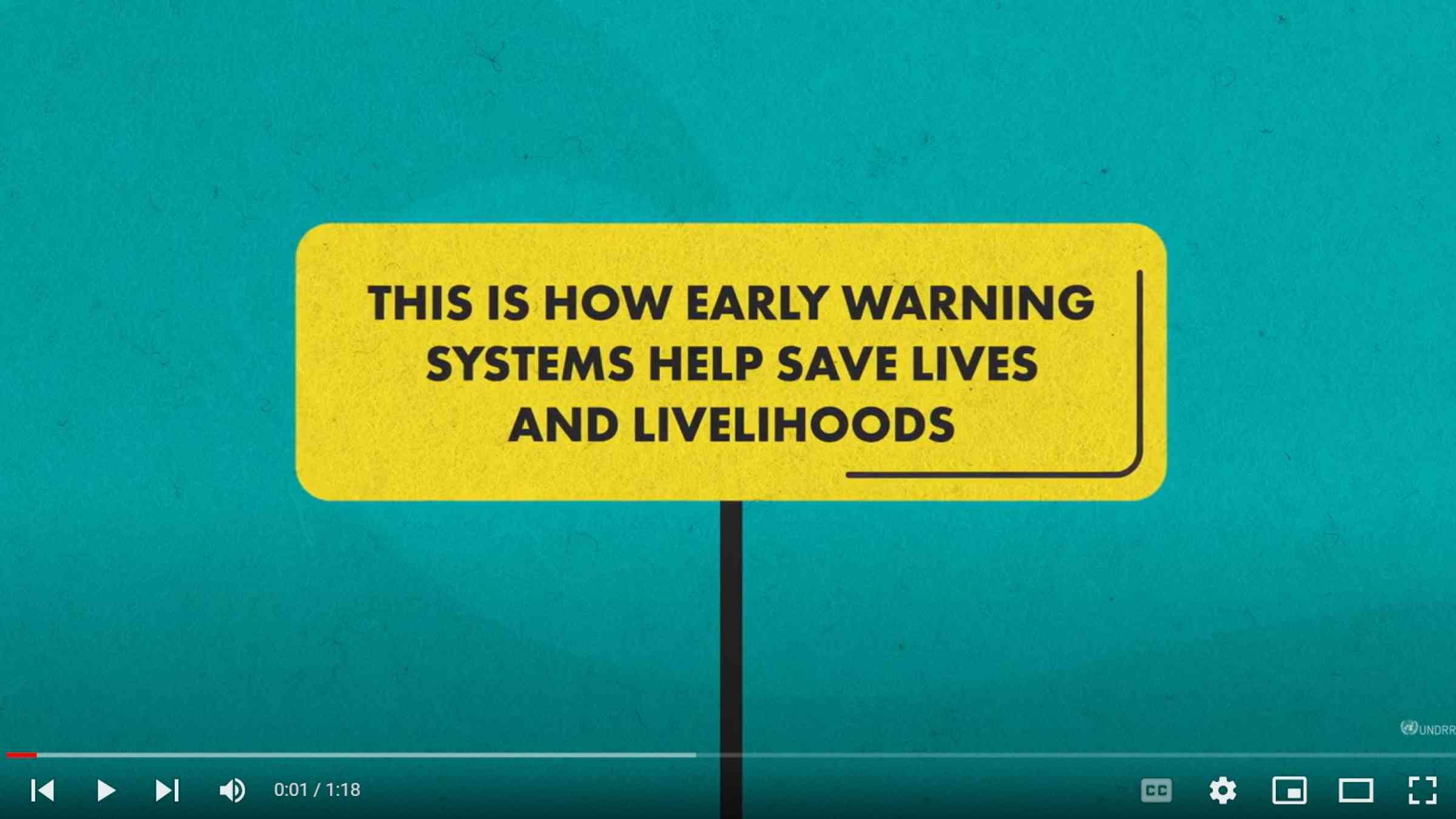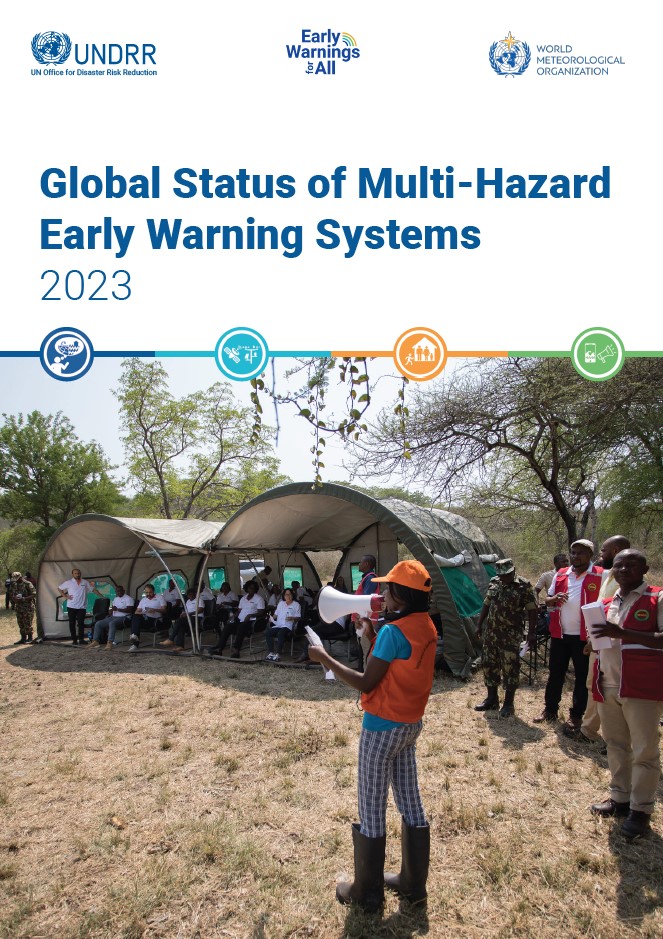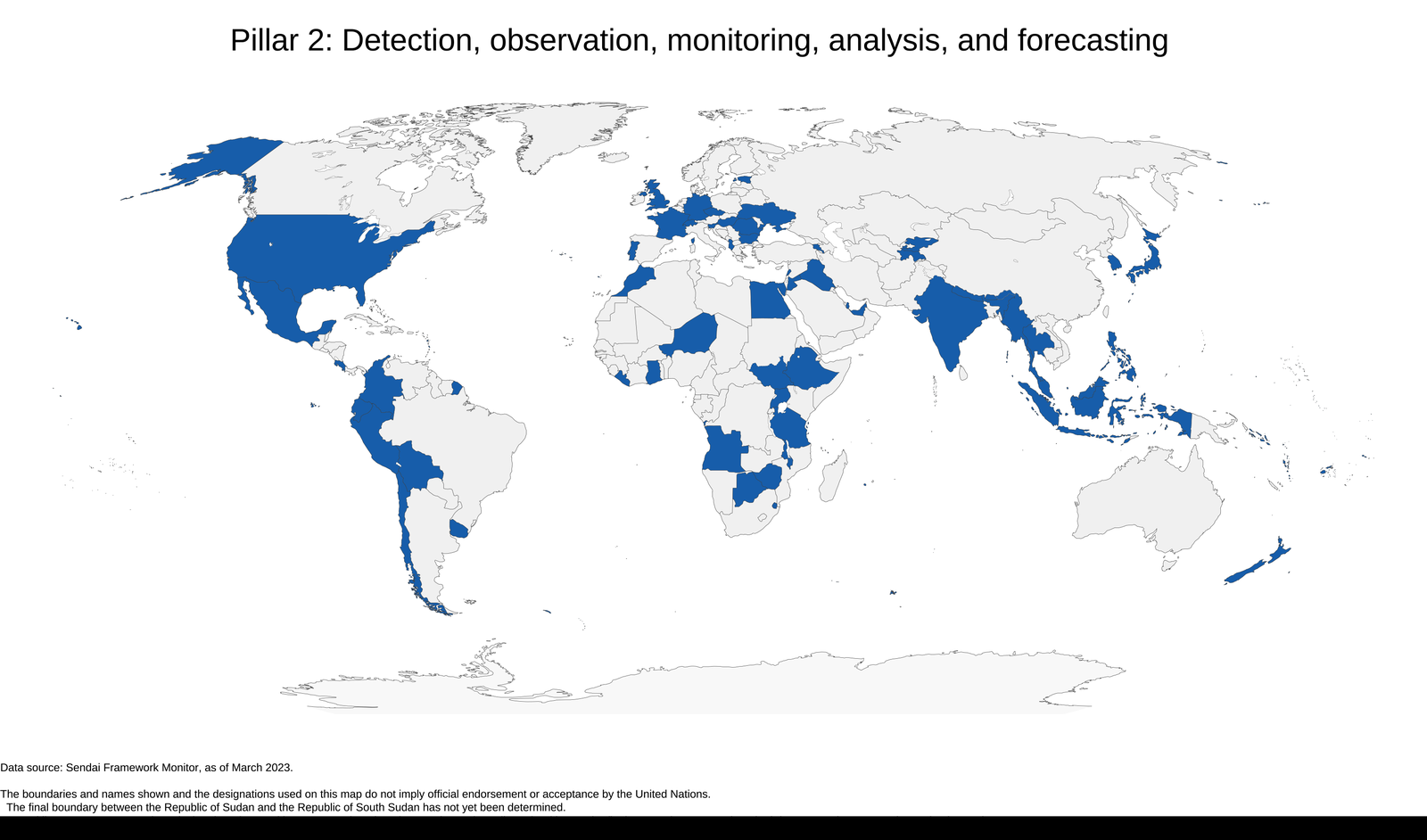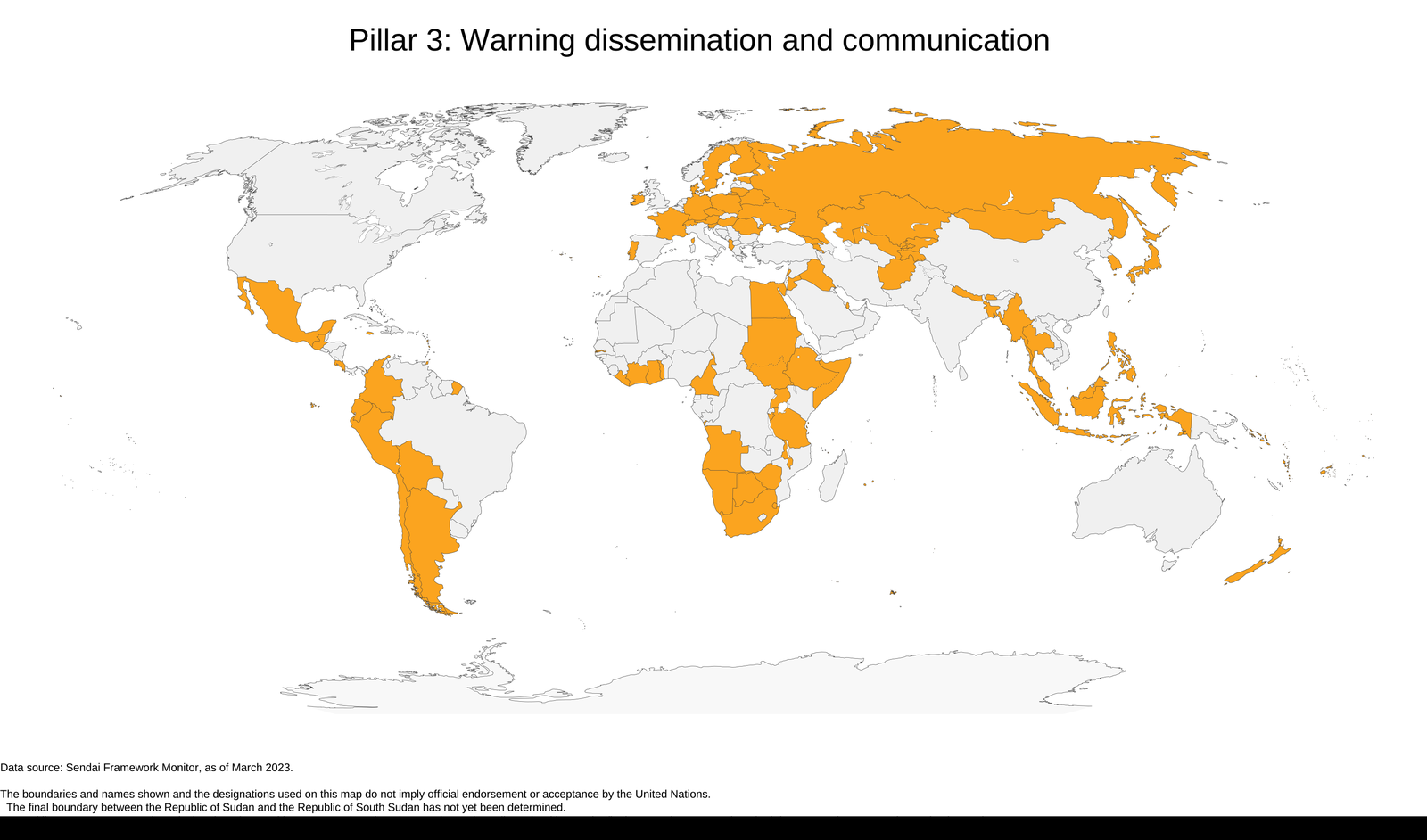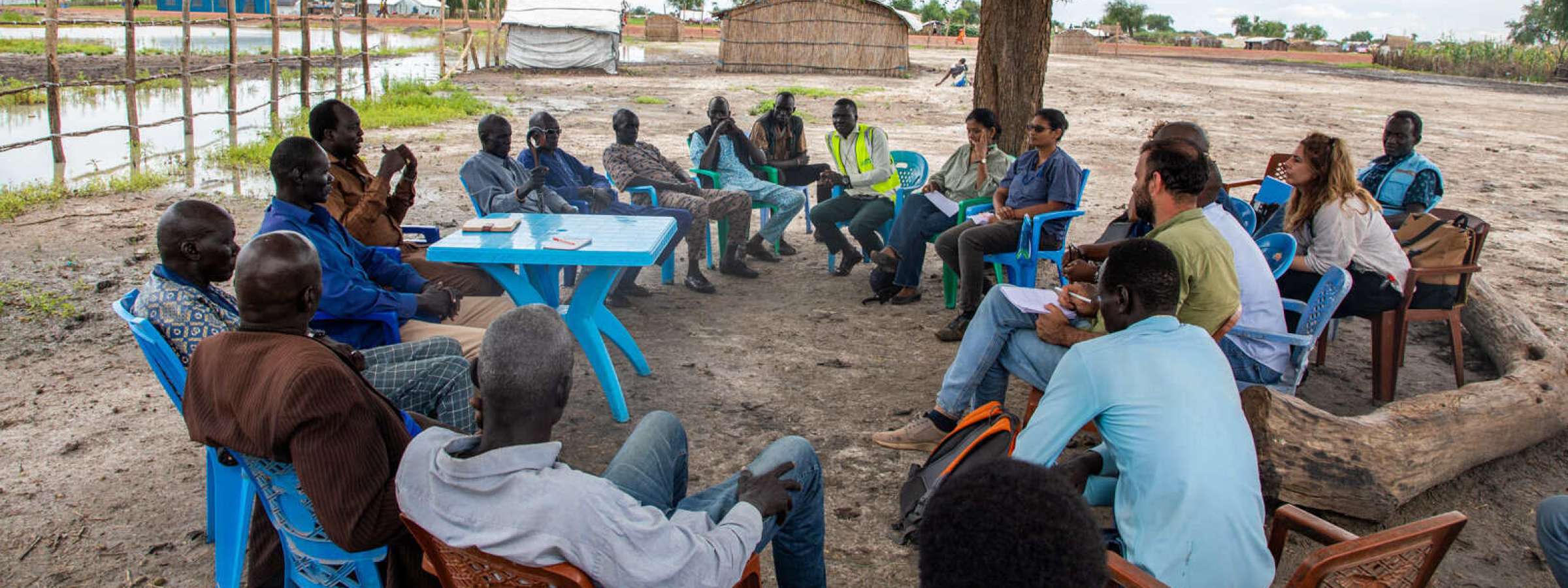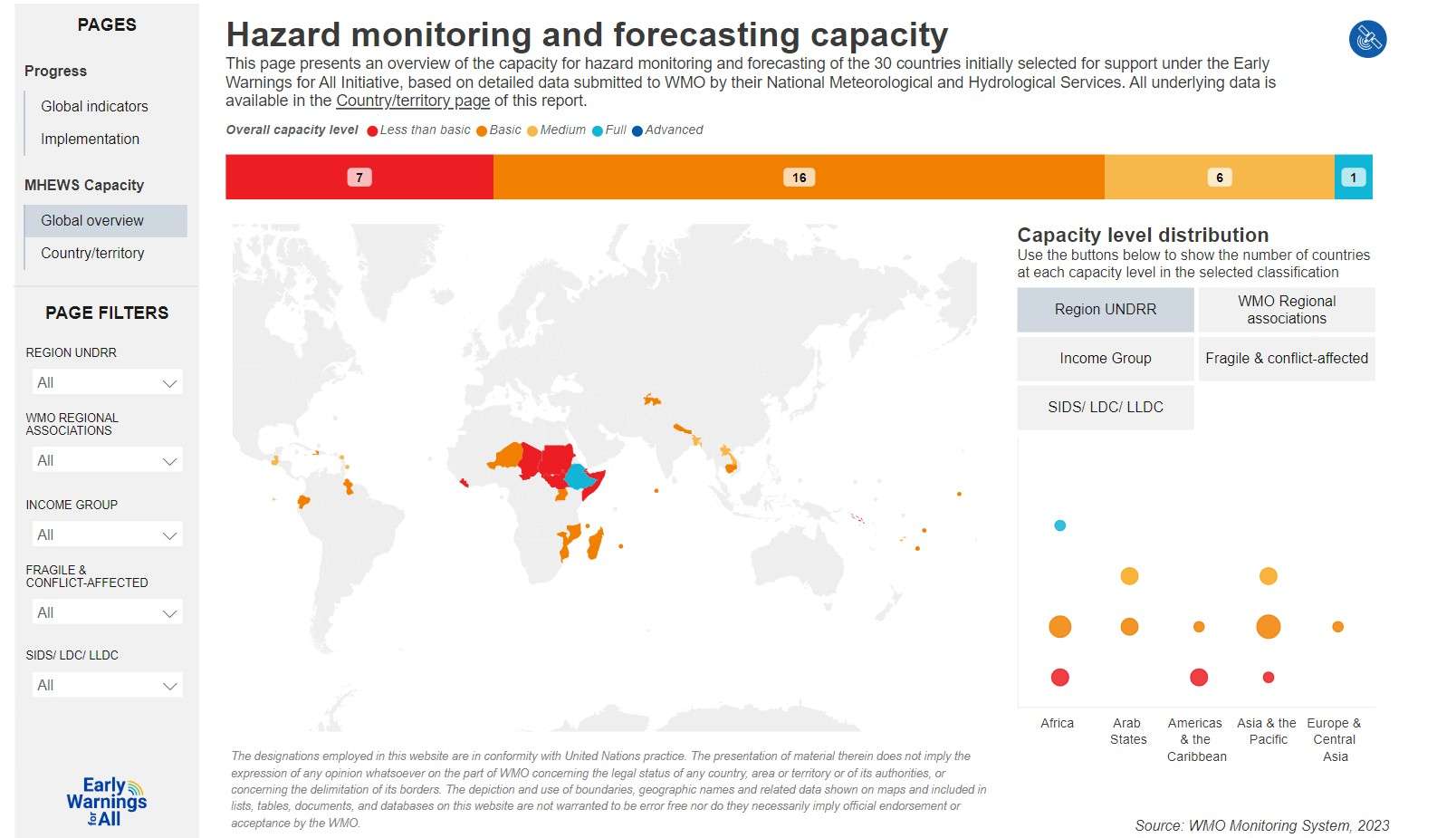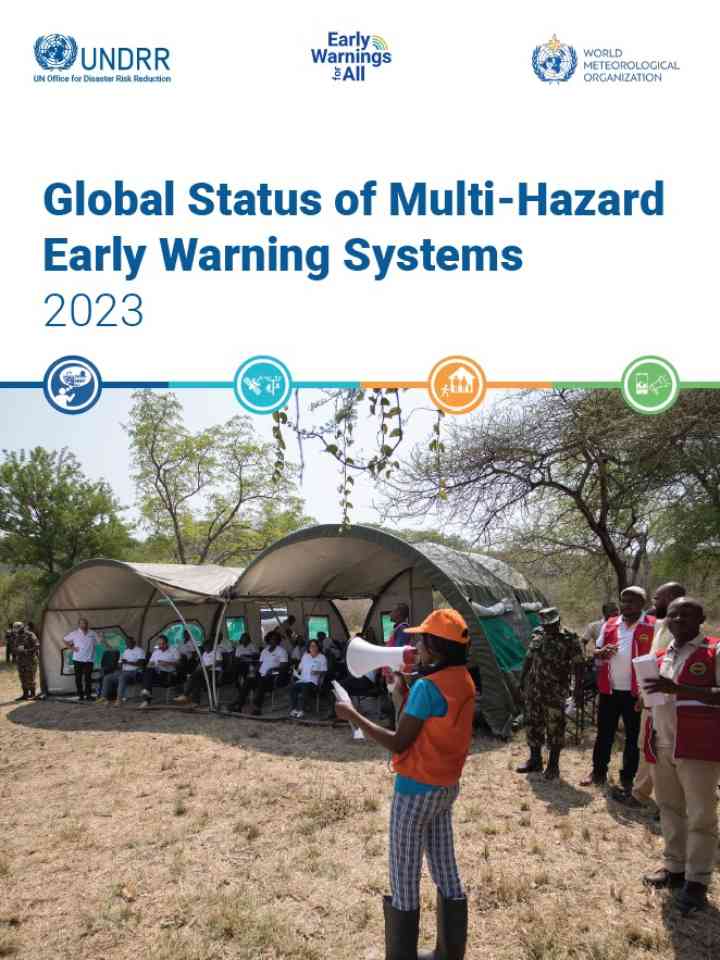Global status of multi-hazard early warning systems 2023
Early warnings save lives and livelihoods yet many developing countries still lack adequate early warning systems.
Ensuring early warnings is essential to help people prepare for extremes. This is why in March 2022, UN Secretary-General António Guterres called for new action to ensure every person on Earth is protected by early warning systems within five years.
To guide global efforts under this initiative, we must have a solid understanding of where we are – to chart our path forward and hold ourselves accountable.
The Global Status of Multi-Hazard Early Warning Systems 2023 report outlines the progress that has been made under the Early Warnings for All (EW4All) initiative. It seeks to highlight good practices through case studies and examples of both global and regional initiatives which are contributing to the achievement of the goal set by the UN Secretary-General.

"What we are delivering under the Early Warnings for All initiative can protect and save vulnerable communities from the worst impacts. This is an ambitious goal – but it is also achievable”
UN Secretary-General António Guterres, 3 December 2023
1. Making good progress…
The trend of increasing numbers of countries reporting the existence of multi-hazard early warning systems (MHEWS) has continued – the number has doubled since 2015 and increased to 101 countries as of March 2023.
- Dramatic improvement has been witnessed in Africa and in the Asia and Pacific region.
- Two-thirds of WMO members report having fully operational warning and alerting services and more than half incorporate hazard, exposure and vulnerability information in their warning products.
- Advances in science and technology, together with the increase in available observations have led to improvements in forecasts, especially lead times.
Cyclone Freddy
Where effective monitoring is in place, accurate forecasts often follow. In the case of Cyclone Freddy, it was first detected by Australia’s Bureau of Meteorology and subsequently tracked, using satellites, throughout its life as it travelled thousands of miles. Advanced tropical cyclone modelling was used to predict Freddy’s track and changes in intensity, all thanks to effective international collaboration in terms of observations, data sharing, modelling, products and expert advice.
- Improved practices in the cascading of data and information from global and regional centres down to the national level, enabling sovereign states to issue more accurate warnings that enable local action.
- Innovations present opportunities within every pillar of MHEWS – from improving the accuracy and timeliness of observations to increasing levels of connectivity across the globe.
New opportunities with new technology
Risk knowledge is also enhanced through technology, creating new opportunities for local actors to collect data from remote locations (e.g. using drones and smartphone applications) and quickly share it (e.g. over mobile Internet).
Warning communication and dissemination benefits from technological advances – especially using improved mobile networks and Internet connectivity.
- More people have access to early warning information from local & national government: indicator G3 has both the highest scores and has seen the greatest improvement in scores since reporting began in 2015. With ninety-five per cent of the world’s population able to access a mobile broadband network and with 4G network coverage reaching 88 per cent of the world’s population, there are significant opportunities to leverage mobile networks and internet connectivity, especially in the context of hazards which can only be forecast on very short timescales (e.g., tsunami).
2. ...but significant gaps remain
- Low coverage in the Americas and the Caribbean and despite progress, persistent gaps in Africa.
- Coverage remains especially low (less than 50%) in LDCs, LLDCs and SIDS.
- Despite a marked improvement in scores since countries first reported, risk knowledge remains consistently low in terms of average score and numbers of countries reporting.
- Significant gaps also endure in terms of monitoring and forecasting, for example, gaps in the Global Basic Observations Network (GBON) persist across much of the African continent and parts of the Pacific.
- Lack of affordability continues to be a barrier to internet access, particularly in low-income economies and these ‘high-tech’ solutions must be seen as part of a wider set of communication channels.
- Despite advances in technology, especially connectivity, some communities remain hard to reach and support. Intensive action is required for community outreach and engagement.
Making sure the message gets through
‘No-tech’ and ‘low-tech’ solutions play an important part in reinforcing messages carried through other mediums and are invaluable in less affluent areas where access to technology is limited yet communities are often exposed to the greatest risk.
They are also robust in the face of power failures and are essential in communities where literacy rates are low or multiple languages are spoken.
In the case of Cyclone Freddy, multiple channels were used to warn communities with a combination of no-, low-, mid- and high-tech solutions being used to share data, information and knowledge with different actors, including local communities.
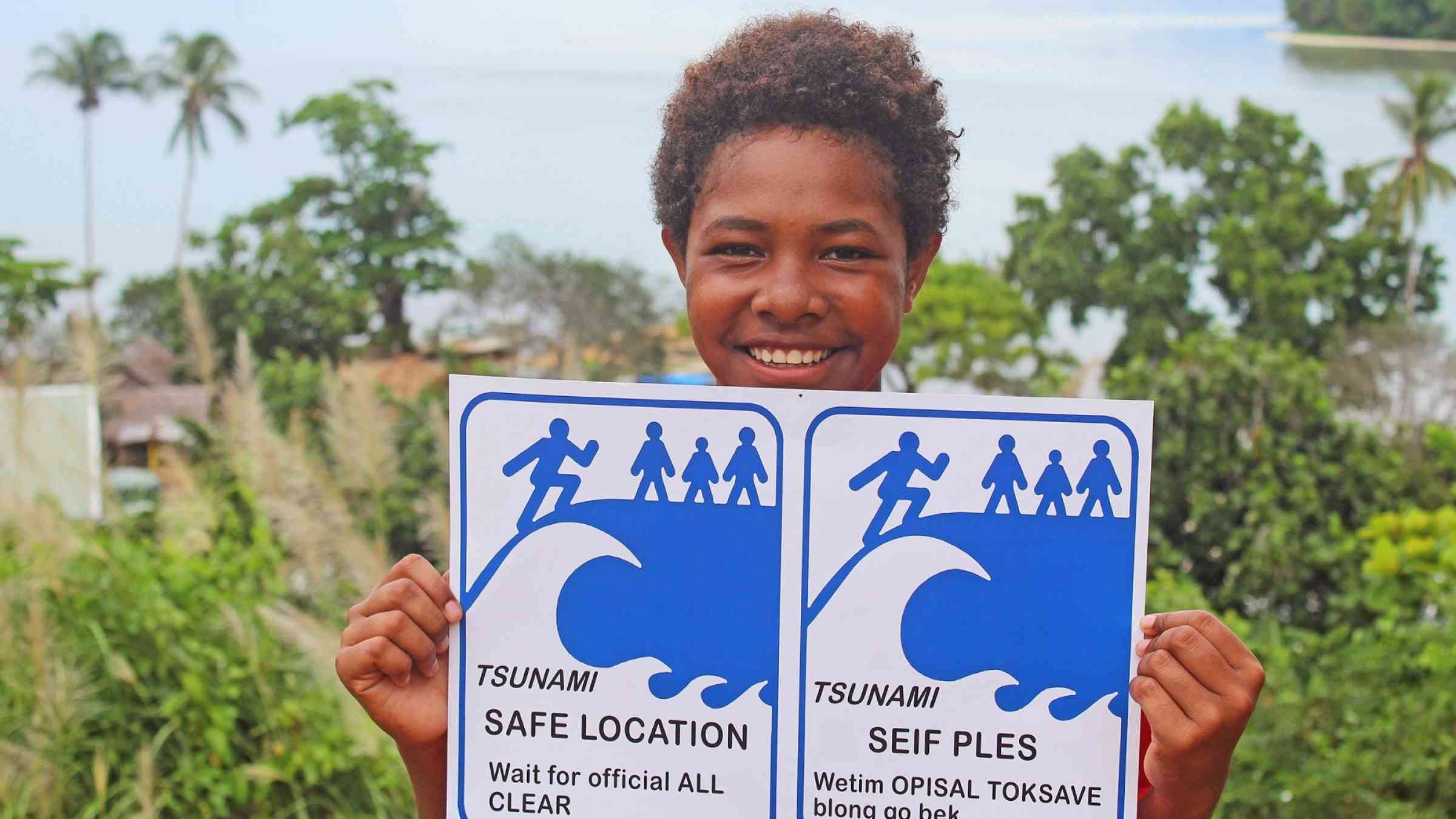
- Not enough plans to act on early warnings: Less than one-third of countries reporting on Indicator G4 (Percentage of local governments having a plan to act on early warnings) indicated ‘substantial progress’ towards achieving MHEWS.
- The number of countries reporting non-zero G4 scores are lowest in Africa (one fifth) and the Americas and the Caribbean (less than a quarter), whereas nearly half of the countries in the Asia and Pacific report having these plans.
3. Better coverage means fewer disasters
- The data shows that countries with limited to moderate MHEWS coverage have nearly six times higher disaster-related mortality ratio compared to that in the countries with substantial to comprehensive coverage (4.05 mortality per 100,000 population, compared to 0.71).
- Similarly, countries that have limited to moderate MHEWS coverages have nearly five times more disaster-affected people per capita than countries with substantial to comprehensive coverages (3,132 compared to 688).
Local leadership
A people-centred, locally led approach is required to effectively mainstream anticipatory action in remote areas and to ensure that the design of EWS and related services meet local needs and preferences. Care should be taken to identify local actors who people trust with whom to collaborate to mainstream early warning and early action within and across communities.
Local communities have a wealth of risk knowledge and expertise in reducing their risks. Traditional leaders are also highly influential and can be crucial to the effective dissemination of warnings. International experts should be careful to facilitate rather than dictate solutions, instead seeking to draw out and utilize existing local, traditional and Indigenous knowledge by ensuring that local people have a voice and agency.
4. Good governance and risk knowledge is vital
- Out of the 101 countries reporting having MHEWS, 95 have also reported existence of national DRR strategies.
- There is also a moderate positive correlation observed between the establishment of national DRR strategy and the existence of MHEWS.
- Countries with more comprehensive DRR strategies have higher coverage of MHEWS.
- More than a third of WMO member states report having a law, decree or similar mechanism in place for MHEWS and 78 per cent have SOPs in place with registered authorities and stakeholders.
Standard Operating Procedures
More than a third of WMO Members report having a law, decree or similar mechanism in place for MHEWS and 78 per cent
have standard operation procedures (SOPs) in place with registered authorities and stakeholders.
The importance of not just developing but testing SOPs is amongst the good practice demonstrated by the National Tsunamis Warning Centres as they come together to rehearse their responses to tsunami warnings in the regular tsunami exercises held for the Indian Ocean.
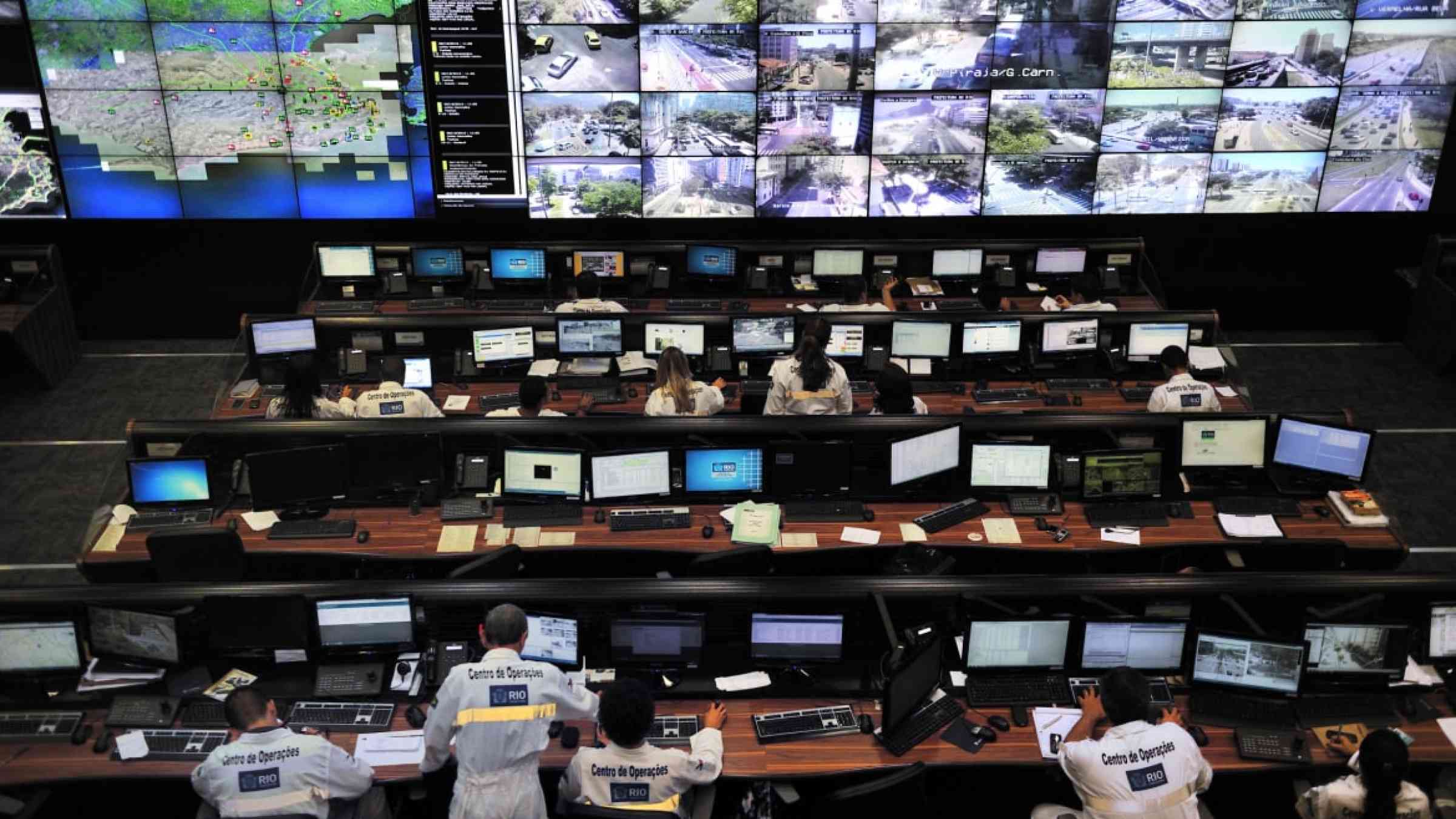
Early Warnings for All Dashboard
The Early Warnings for All Dashboard facilitates information sharing, enhance coordination, and strengthen accountability. It also serves as a centralized data portal where data for the four Early Warnings for All key pillars and those for DRR strategies and cross-cutting enablers can be monitored and visualized.
The dashboard presents selected monitoring indicators structured along three categories:
- Global indicators
- Implementation indicators
- Country capacity indicators
- The development and implementation of an EWS is not a small task and requires significant investment from national actors and the global community for capital investment and ongoing operation. Sustainable funding is a challenge noted within and across each pillar and at every level. A comprehensive approach is required, with sustainability built into the design of every EWS and related interventions.
- The development of communities of practice is essential to the efficient and effective scaling up of EWS worldwide – especially at the local level, where there is the opportunity for communities in different parts of the world to share experiences and best practice.
The CREWS Initiative
Initiatives such as the Climate Risk and Early Warning Systems (CREWS) initiative have led to improvements in EWS across the globe by introducing effective governance structures and improving forecasting, warning and dissemination capacity.
CREWS was established in 2015 as a financing mechanism to contribute to increased access and capacities of LDCs and SIDS,
to generate and communicate effective, impact-based, multi-hazard and gender informed early warnings and risk information
within strengthened national MHEWS.
In 2022, CREWS introduced its people-centred operational guidelines and procedures, so that implementing partners will co-design, execute and monitor national and regional projects by including and integrating the input of multiple collaborators – including women, communities and local organizations.
5. Recommendations to meet the 2027 Early Warnings for All goal
To build on the progress to date, and to address the challenges and shortfalls:
- Focus on risk knowledge, preparedness and advancing EWS implementation across Africa and the Americas and Caribbean regions, LDCs and SIDS
- Design EWS for scale: best practice is to start small – on the priority hazards identified locally – and to develop, test, iterate and expand the EWS over time.
- Share data and knowledge: data sharing – about hazards, vulnerability, exposure, risk or related information, such as local traditions and languages that affect the dissemination and understanding of warnings – is the foundation for any EWS.
- Develop communities of practices: it is essential to establish mechanisms to share knowledge, guidance, and lessons learnt.
- Ensure local ownership and an ‘all of society’ approach: local actors must be placed at the heart of EWS design, development, implementation, evaluation, improvement and operation.
- Train key actors and test plans through simulations and exercises: provide opportunities to test all aspects of EWS, from roles and responsibilities, data flow and warning dissemination, to testing equipment and practising actions (e.g., walking evacuation routes).
- Leverage flagship programmes and existing initiatives: Every opportunity should be sought to align and leverage these activities and to ensure that time and resources are not wasted through duplication.
- Maximise innovations in science and technology: this includes social science– EWS can only be effective if warnings result in appropriate action.
- Harness sustainable, complementary funding: that current and potential funders (governments, donors, philanthropists etc.) must be brought into the EW community and its conversations to ensure shared understanding, urgency and action.
6. Download the report
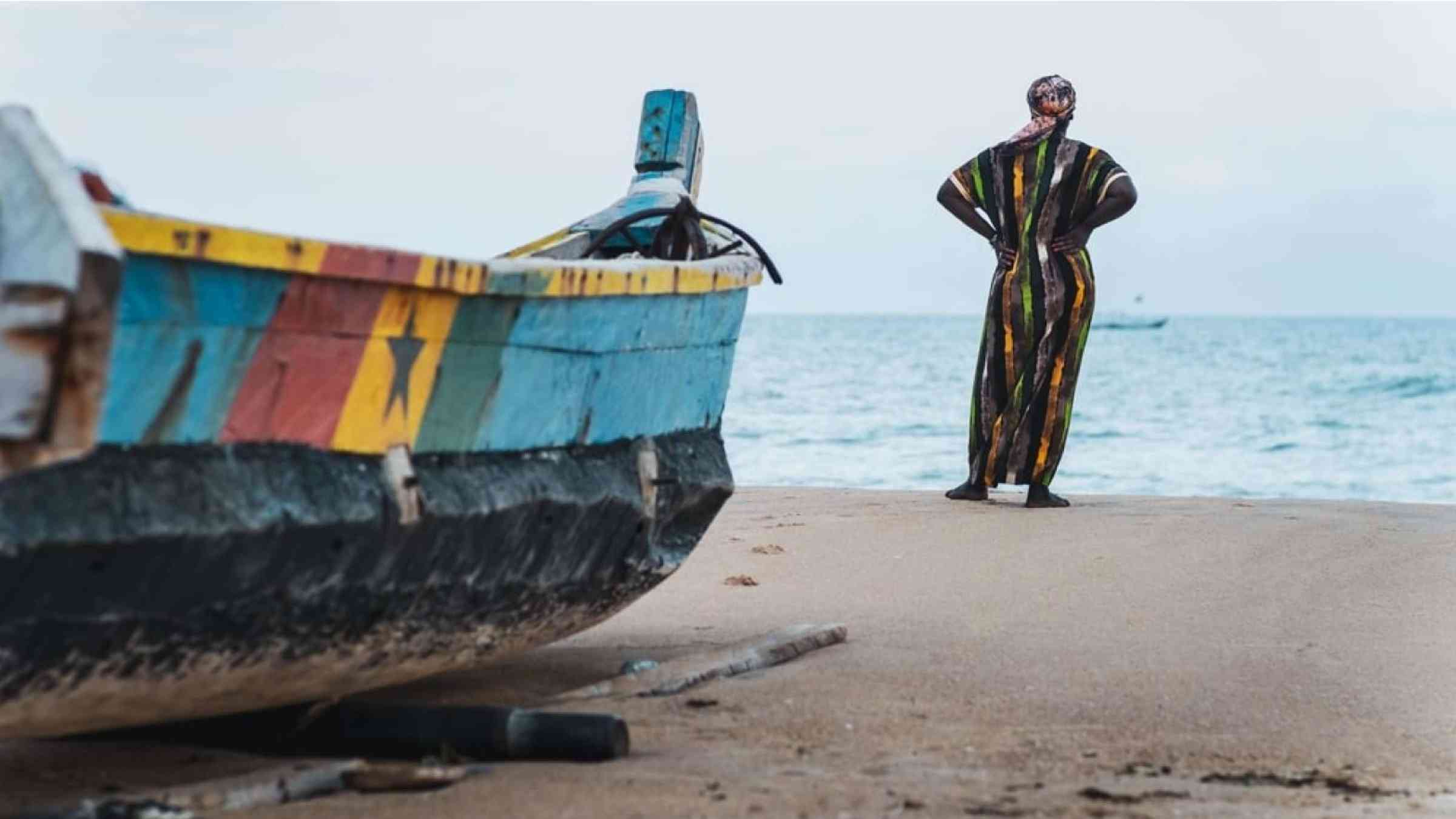
Related and further reading
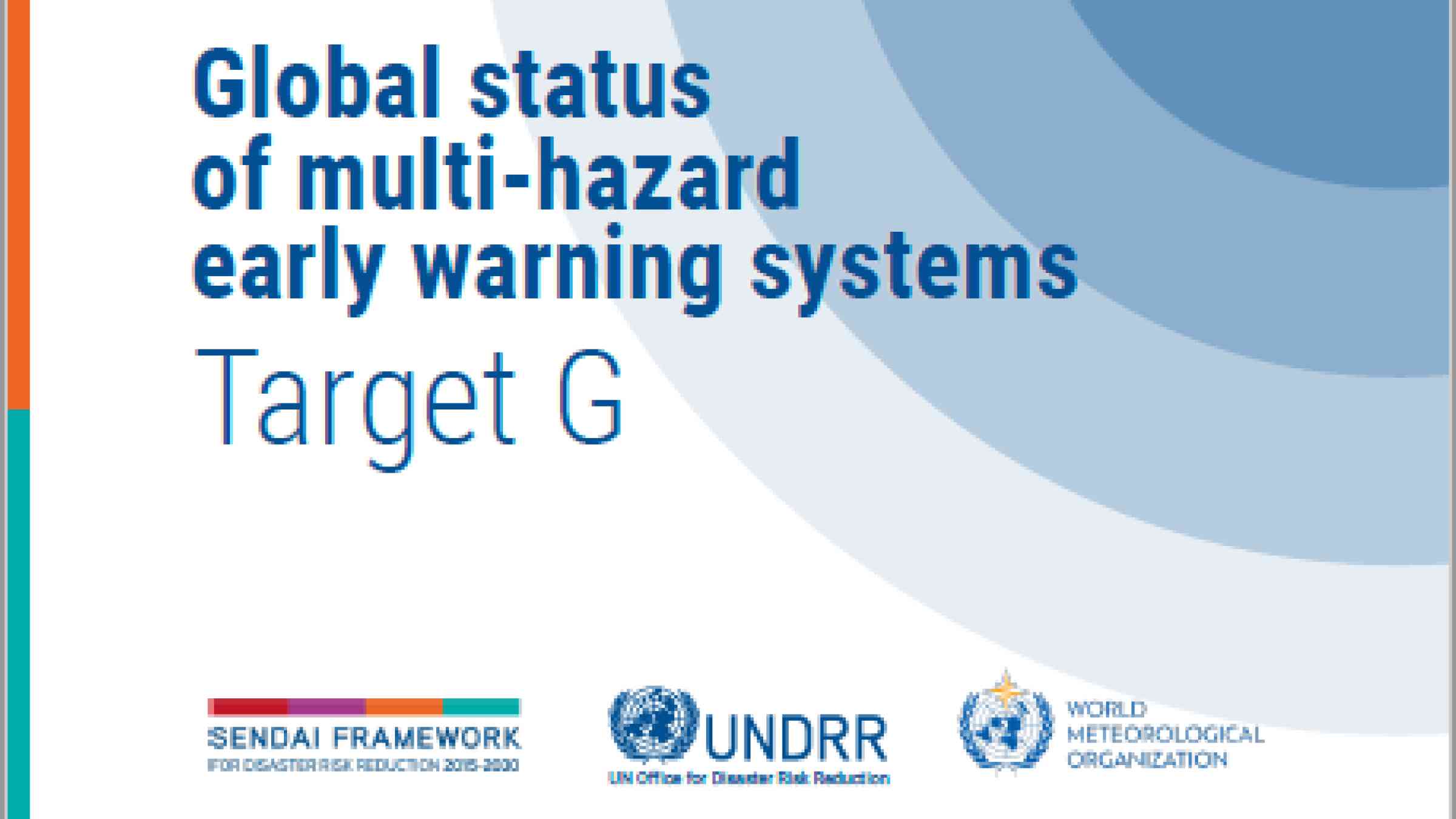
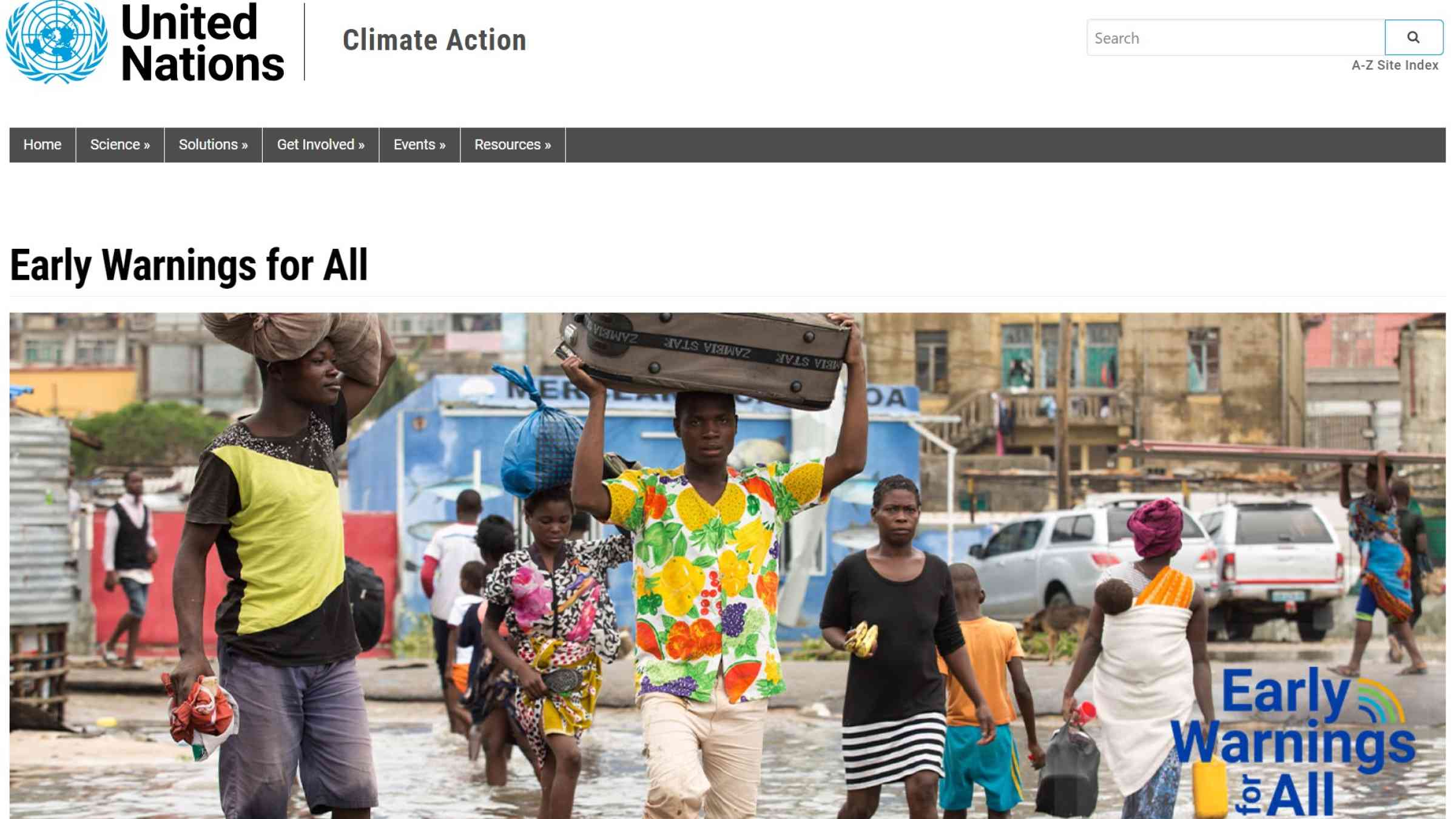
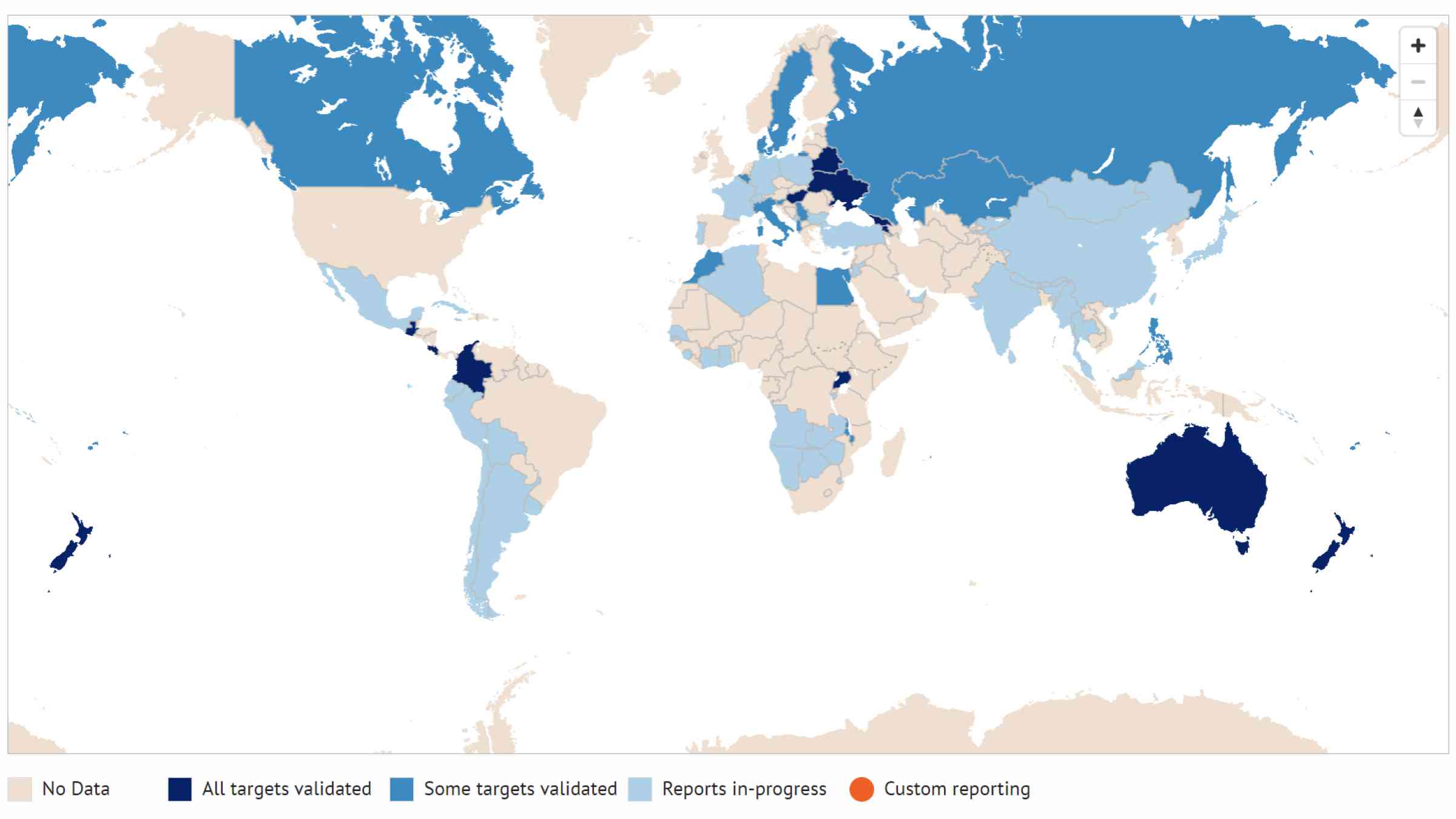
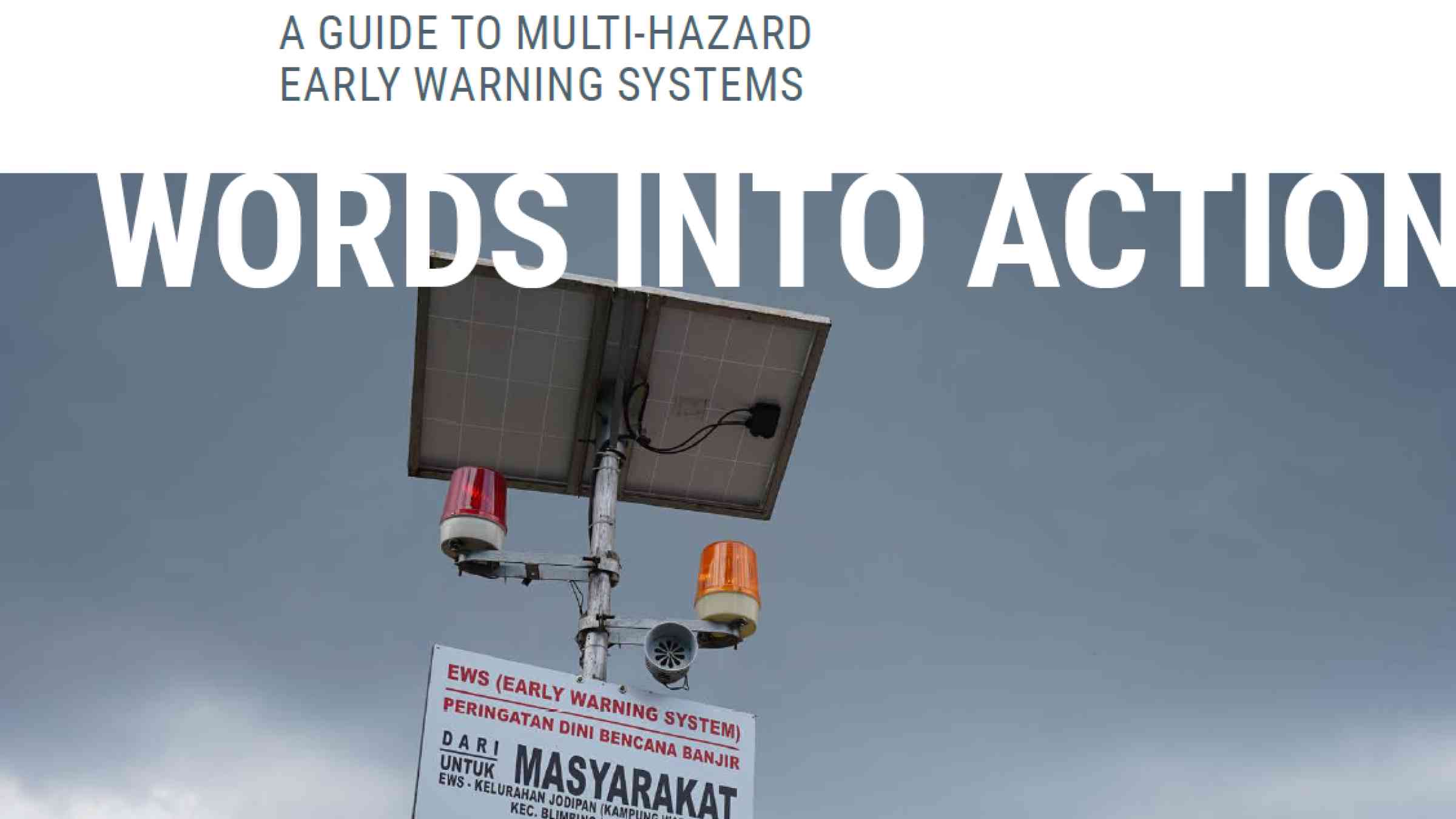
Video resources
